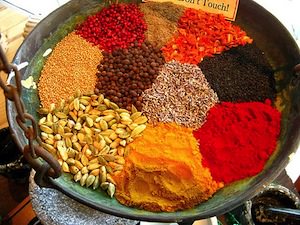Is Variety of Contamination the Spice of Life?
An analysis of spice imports to the U.S. found that about 12 percent of them are contaminated with "insect parts, whole insects, rodent hairs and other things," The New York Times reports.
An analysis of spice imports to the U.S. found that about 12 percent of them are contaminated with “insect parts, whole insects, rodent hairs and other things,” The New York Times reports.
The finding, released Wednesday by the Food and Drug Administration, is part of a broad, years-long look at the safety of spice imports. Authorities also found that at least 7 percent of examined imports were contaminated with salmonella, “a toxic bacteria that can cause severe illness in humans,” the Times wrote.
— Posted by Alexander Reed Kelly.
Your support matters…The New York Times:
The agency called spice contamination “a systemic challenge” and said most of the insects found in spices were the kinds that thrive in warehouses and other storage facilities, suggesting that the industry’s problems result not from poor harvesting practices but poor storage and processing.
John Hallagan, a spokesman for the American Spice Trade Association, said Wednesday that he had not seen the report, so he could not comment on it. But spice manufacturers have argued in the past that food manufacturers often treat imported spices before marketing them, so F.D.A. findings of contamination levels in its import screening program do not mean that spices sold to consumers are dangerous.
F.D.A. inspectors have found that some spices that claim to have been treated are contaminated nonetheless. And the high levels of filth from insects and rodents is a problem that is not easily resolved because, unlike with salmonella contamination, simply cooking or heating the spices will not rid the products of the problem. Insects can also be a source of salmonella contamination.
Independent journalism is under threat and overshadowed by heavily funded mainstream media.
You can help level the playing field. Become a member.
Your tax-deductible contribution keeps us digging beneath the headlines to give you thought-provoking, investigative reporting and analysis that unearths what's really happening- without compromise.
Give today to support our courageous, independent journalists.






You need to be a supporter to comment.
There are currently no responses to this article.
Be the first to respond.